Have you ever wondered how to make the most out of your journey to Big Sky Country?
With these Montana travel tips, you’re about to discover the secrets to a vacation filled with awe-inspiring landscapes and cultural treasures.
Montana’s rugged mountains, rolling plains, and vibrant communities offer a backdrop for an adventure that’s as rich in history as it is in scenic beauty.
We’ll delve into the best places to visit in Montana, from the breathtaking vistas of Glacier National Park to the historic battlegrounds of Little Bighorn.
I’ll share my personal experiences, like the thrill of spotting wild horses on the shores of Flathead Lake and the serenity of a hike through the wildflower meadows of Beehive Basin.
- Related article: Montana Travel Pointers
So, grab your map, and let’s embark on a journey through the Treasure State. Keep reading to uncover the essential tips and insider knowledge that will transform your Montana vacation from good to great!
7 Key Takeaways On Montana Travel Tips
- Montana is a treasure trove of natural beauty, offering diverse landscapes from the soaring peaks of Glacier National Park to the vast prairies of the eastern plains.
- Must-visit spots include Glacier National Park, Yellowstone National Park, Flathead Lake, Lake McDonald, Lewis and Clark Caverns State Park, Beehive Basin, Bridger Bowl Ski Area, Little Bighorn Battlefield National Monument, Missoula, Bozeman, and the Beartooth Highway.
- Plan and book accommodations well in advance, especially during peak seasons, for a smoother trip experience. This includes options inside and outside the parks, with reservations often opening up months in advance.
- Montana is a bear country, so carrying bear spray during outdoor activities is crucial. Stay informed about wildlife encounters and trail safety measures, especially when hiking or exploring remote areas.
- Be prepared for limited cell phone coverage in some regions of Montana. Consider using reliable cell service providers and having alternative means of navigation, such as offline maps or GPS devices.
- Due to reported car rental shortages and possible vehicle reservation systems in popular park areas, it’s advisable to book rental cars early and be aware of any reservation requirements or limitations.
- Montana’s weather can vary widely, impacting road conditions and travel experiences. Be informed about seasonal weather patterns, potential travel advisories, and the necessity of filling up gas tanks due to distances between gas stations, especially in remote areas.
Best Places to Visit in Montana
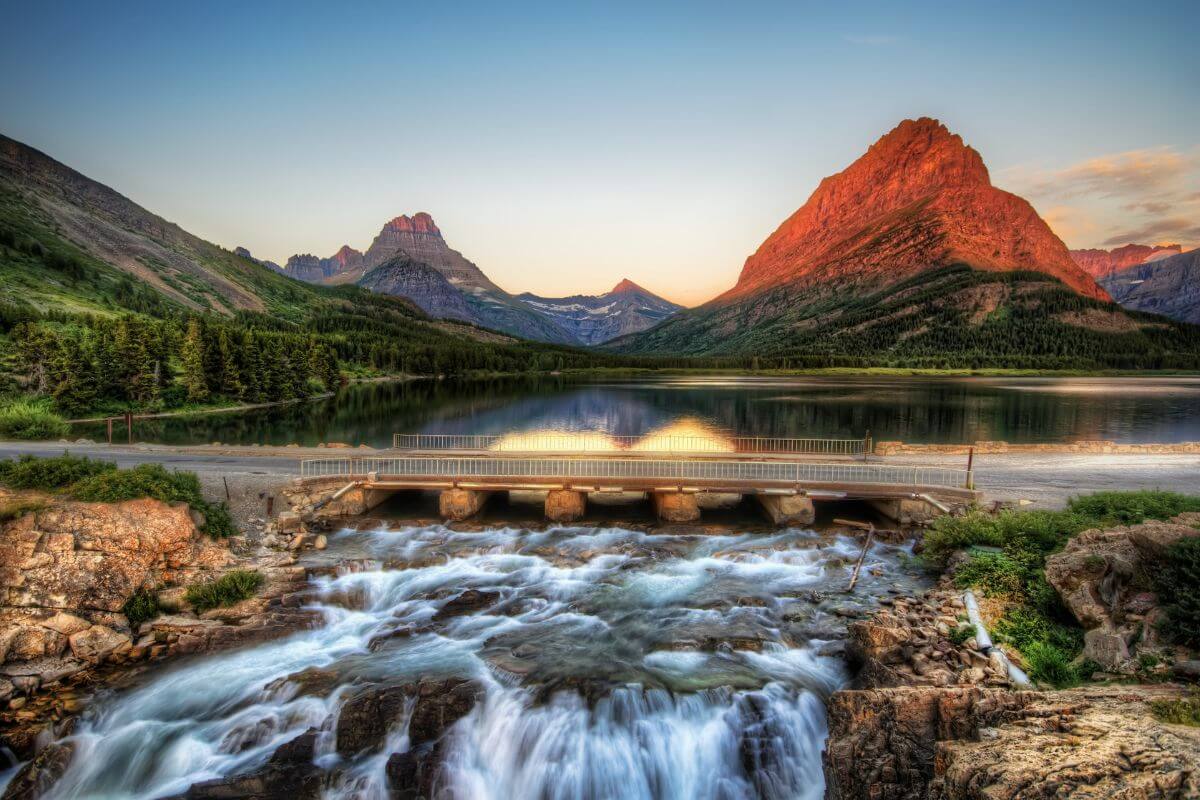
Montana is a treasure trove of natural wonders, from the soaring peaks of Glacier National Park to the vast prairies of the eastern plains.
Here are some must-visit spots to add to your Montana itinerary.
1. Glacier National Park
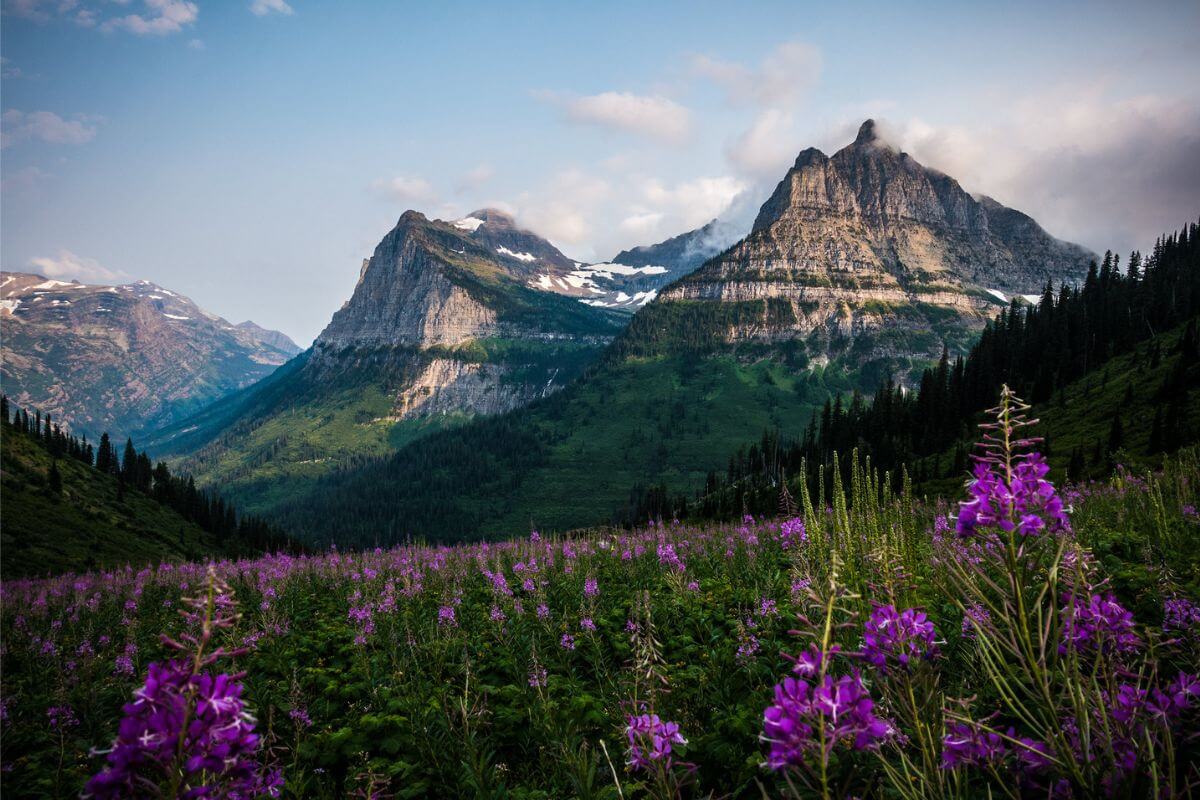
Glacier National Park, the adventure hub of Montana, offers a buffet of outdoor activities. You can hike, rock climb, camp, and even do some wildlife viewing. If you’re up for it, forest road camping is an option too.
One of the park’s biggest draws is the scenic Going-to-the-Sun Road, perfect for a day trip with its jaw-dropping vistas. But here’s the deal: during peak seasons like July and August, it can get busy.
When it comes to hiking, Many Glacier is where you want to be. The Grinnell Glacier, Cracker Lake, and Ptarmigan Lake trails are prime. I’d even recommend staying a night in Many Glacier to fully explore the area.
Now, let’s talk lodging. Inside the park, you have options like Lake McDonald Lodge, Apgar Village Lodge & Cabins, and Swiftcurrent Motor Inn and Cabins. Reservations for these spots open up 13 months in advance, so plan accordingly.
If you’re looking to stay outside the park, West Glacier is a popular choice. Just remember, summer demand is high, so book in advance.
Here’s another tip: you can also traverse to Glacier NP by Amtrak’s Empire Builder train, which makes stops through several locations such as Browning, Cut Bank, East Glacier, Essex, Glasgow, Havre, Libby, Malta, Shelby, West Glacier, Whitefish and Wolf Point.
Here’s a safety tip, you’re in bear country, so always carry bear spray, especially on those wild bear-spotting adventures.
2. Yellowstone National Park
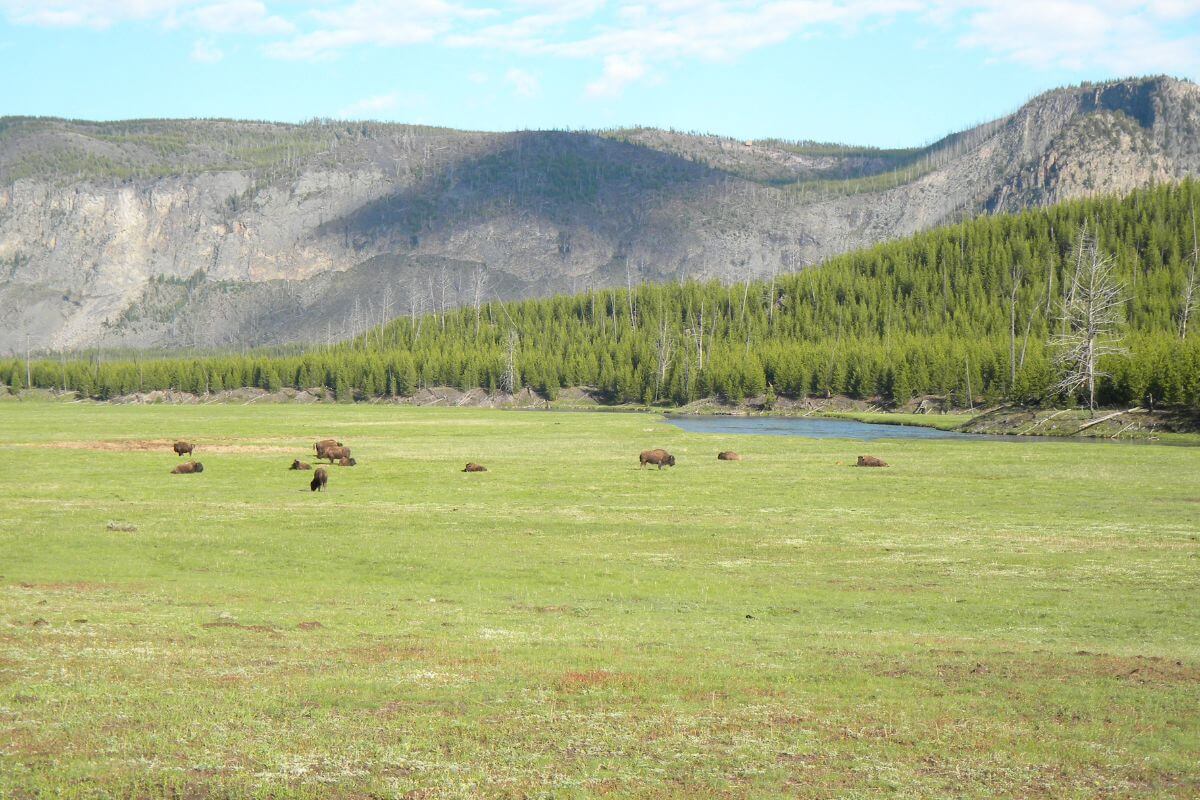
If you’re planning a Montana trip, Yellowstone National Park should be right up there on your priority list. And let me tell you, it’s not just the park’s sheer size that’s impressive; it’s the diverse experiences it offers.
From the iconic Old Faithful geyser to the jaw-dropping Grand Canyon of Yellowstone, this place has it all.
So, where should you stay when you’re in the park? Here are a few top recommendations:
- Canyon Lodge and Cabins – Offers more than 500 rooms and cabins spread out through the woods near the Grand Canyon of the Yellowstone River
- Grant Village – Includes a campground and a lodging complex with six two-story buildings, each containing 50 rooms.
- Lake Lodge Cabins – Has 186 cabins available in Western, Frontier, and Pioneer styles, with options for private baths and pet-friendly accommodations.
- Lake Yellowstone Hotel – Offers a mix of modern and rustic accommodations in the form of rooms and cabins.
By staying within the stunning park, you get the first pick of the day’s activities. Some accommodations offer perks like swimming pools and Wi-Fi, ensuring you’re always connected.
But don’t overlook West Yellowstone, just outside the park’s western entrance. It’s a bustling little town with a lot to offer, including easy access to all park areas.
Yellowstone Ave is the main street in West Yellowstone, and it’s teeming with shops and restaurants, giving you a lively introduction to your Yellowstone journey.
Now, let’s talk about the adventures that await you:
- Old Faithful Geyser – A must-see, but be prepared for crowds during peak hours.
- Grand Canyon of Yellowstone – Hiking down to the falls is an experience you won’t forget.
- Lamar Valley – The best place for wildlife sightings, including the elusive wolves.
- Hiking and Scenic Drives – From easy strolls to challenging treks, the park has something for everyone.
And if you’re into fishing, the Yellowstone River is your playground. From Gardner River to Lamar River, the opportunities are endless.
Just remember, safety comes first. Always carry bear spray, and make some noise on the trail to avoid any unexpected encounters.
Whether you choose to stay within the park or venture out to West Yellowstone, your Montana vacation is about to get a whole lot more exciting.
Yellowstone National Park is nature’s playground, and you’re about to become its most enthusiastic player.
3. Flathead Lake
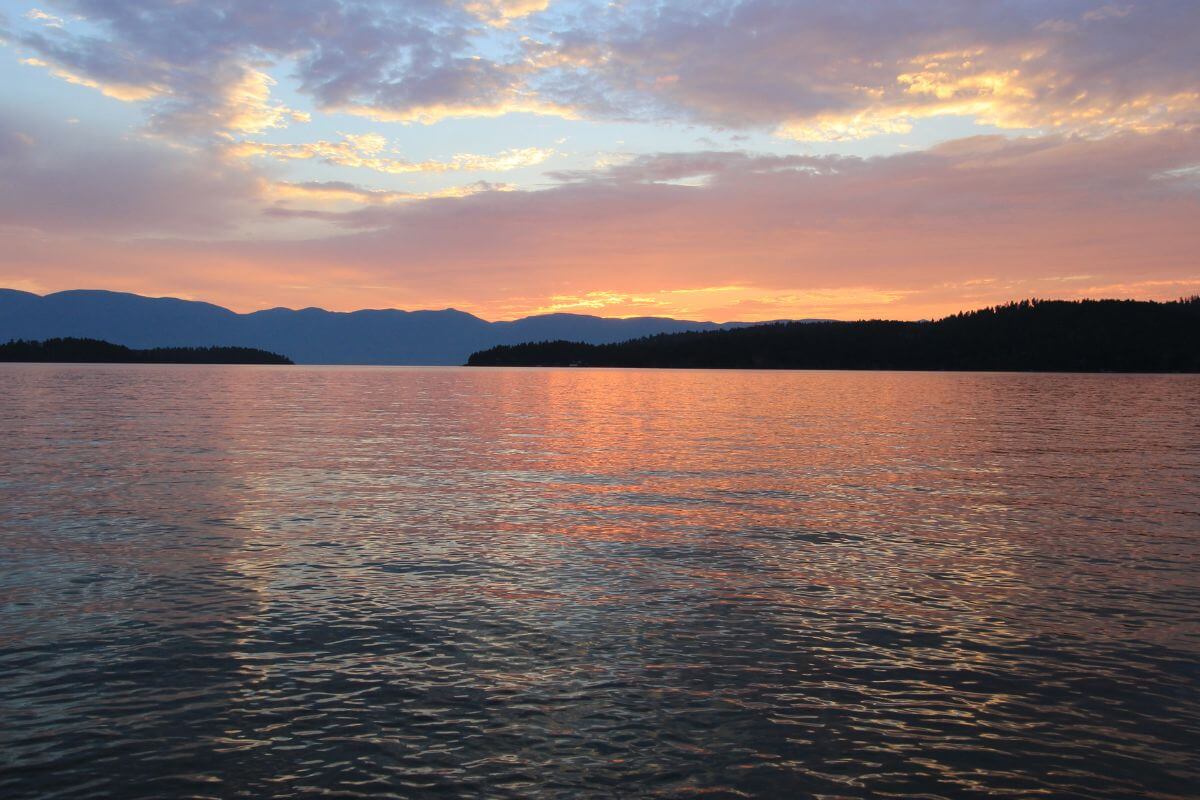
Flathead Lake, the largest freshwater lake west of the Mississippi, is a world unto itself. I’ve spent summers here, and let me tell you, it’s a paradise for water lovers and landlubbers alike.
The lake spans a whopping 200 square miles, offering clear-as-glass waters and a buffet of activities.
- Water Activities – Boating, fishing, kayaking, and even scuba diving — yes, you read that right — are just a few of the options. I once went diving here and was blown away by the visibility.
- Horseback Riding – Want to trade your life jacket for a saddle? The Flathead Valley has you covered. From leisurely scenic trails to specialized riding programs, you can explore the lake’s fringes in a whole new way.
- Camping and Hiking – Wayfarers State Park and Yellow Bay are popular camping spots, offering swimming, boating, and views that will make your heart sing. For the hikers, Jewel Basin Hiking Area and Pablo National Wildlife Refuge provide diverse terrains and jaw-dropping vistas.
- Wild Horse Island – This one’s a must-do. Accessible by rental sailboats, boats, or canoes, this island is a wildlife haven. I once spotted a herd of wild horses galloping along the shoreline — it was like something out of a movie.
The lake’s crystal-clear waters and numerous public access points make it a dream for anyone with an adventurous spirit.
But here’s a pro tip: come during the summer months of July and August. That’s when the lake truly comes alive, and you’ll have the best chance to experience all it has to offer. However, just take note that flight expenses in Montana during this season are more expensive due to higher demand.
4. Lake McDonald
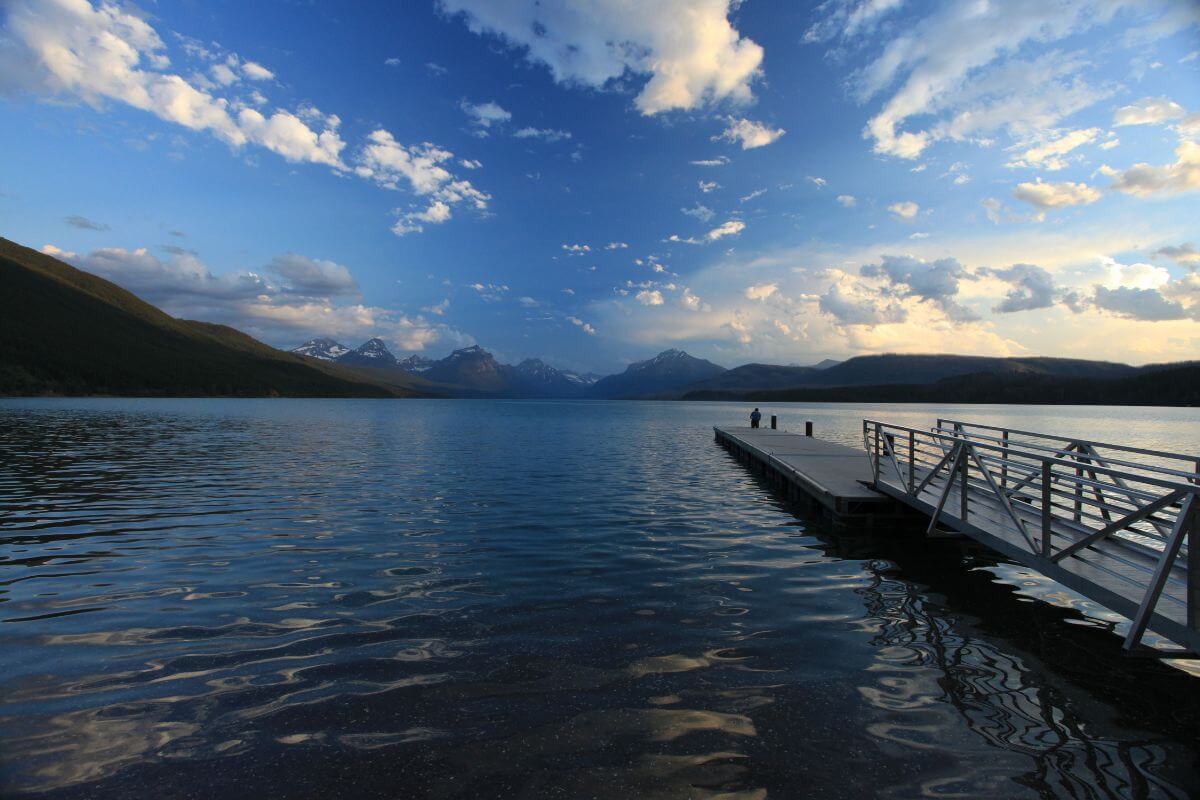
Lake McDonald is the crown jewel of Glacier National Park, and let me tell you, it’s a showstopper.
As the largest lake in the park, it’s not just about the size; it’s the whole package. The scenery is so breathtaking; it’s almost a spiritual experience.
But let’s not forget the real stars of the show: the wildlife. I’m talking bears, bighorn sheep, elk, mountain goats, and deer, all going about their business in this natural wonderland.
This is no zoo; it’s their home, and you’re just a lucky guest. Wildlife viewing here is top-notch, so keep your camera at the ready.
Lake McDonald Activities:
- Apgar Visitor Center – Start your Lake McDonald journey here. Get the lay of the land, pick up some maps, and maybe even chat with a park ranger.
- Sun Tours – If you’re more of a “let someone else do the driving” kind of traveler, a Sun Tour is just the ticket. These guided tours offer a wealth of knowledge about the lake’s history and ecology.
- Kayaking – For a bit more excitement, try rafting on the lake’s calm waters. It’s a unique perspective that you won’t soon forget. You can rent boats or kayaks from Glacier Outfitters.
- Virginia Falls Hike – Lace up your boots and hit the trail to Virginia Falls. It’s a moderate hike that rewards you with a stunning waterfall view.
Lake McDonald is a destination within a destination. You could spend an entire vacation here, and I wouldn’t blame you.
Just make sure to take it all in — the fjord-like vistas, the wildlife spectacles, and the activities that make every moment count.
5. Lewis and Clark Caverns State Park
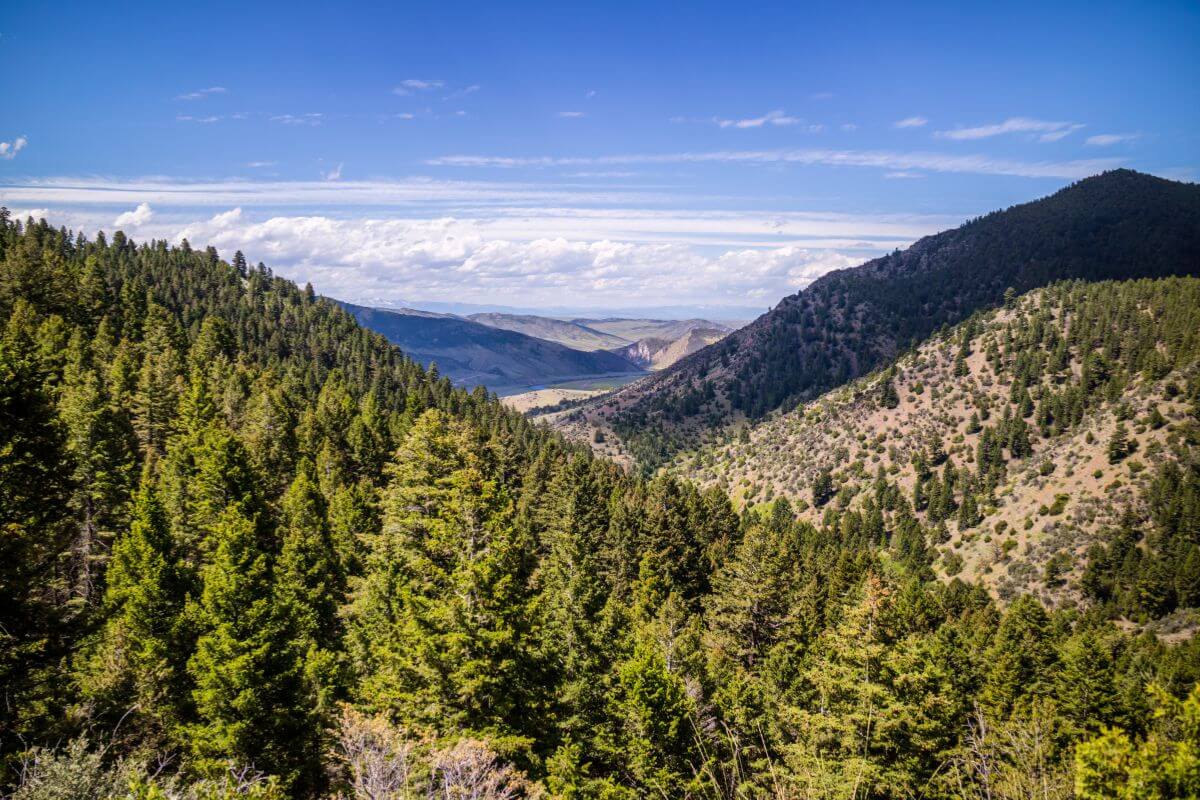
If you’re a fan of geological wonders, Lewis and Clark Caverns State Park is a must-visit.
These caverns are not just any old caves; they’re some of the most exceptional limestone caverns in North America. But it doesn’t stop there — this park offers a whole array of above-ground activities too.
What to Do at Lewis and Clark Caverns State Park:
- Guided Cave Tours – The park is famous for its electrically lighted, safe cavern tours. Trust me, the underground formations will blow your mind.
- Hiking Trails – Explore the park’s beauty above ground with trails that cater to all fitness levels.
- Camping Facilities – Fancy a night under the stars? The campgrounds here are top-notch, with amenities like fire pits and picnic tables.
The park boasts two modern visitor centers with interpretive displays and concessions. From stargazing to storytelling, the park offers a range of activities to enhance your visit.
You can also catch a live performance or an educational talk in the park’s amphitheater. The park is teeming with life, both above ground and in its streams. Don’t forget your binoculars!
The cave tours only operate from May through September, so plan your visit accordingly. But the Lewis and Clark Caverns State Park is open year-round, so you can experience its natural beauty in any season.
6. Beehive Basin
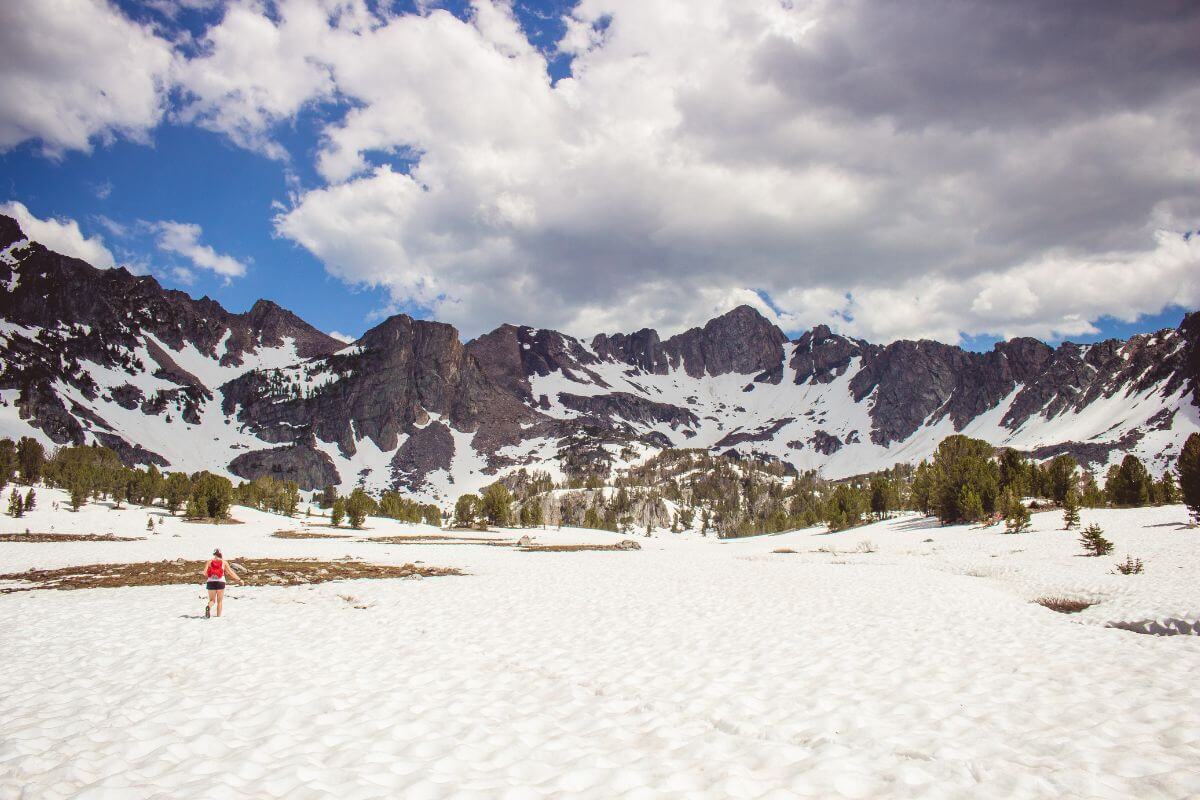
If you’re a fan of winter wonderlands or summer hikes that make you feel like you’ve stepped into a postcard, Beehive Basin is a must-visit.
Located near Big Sky, this scenic area is a northern tributary of the middle fork of the west fork of the Gallatin River, just a stone’s throw away from the iconic Yellowstone National Park.
The Beehive Basin Trail is a gem, winding through towering glacial cirques and offering expansive mountain views. In summer, the trail leads to alpine wildflower meadows, while winter transforms it into a skier’s paradise.
Beehive Basin is a backcountry skiing mecca, thanks to its deep snow, varied terrain, and jaw-dropping scenery. Even during winter, a plowed paved road makes it accessible, so you don’t have to be an expert to experience the magic.
Whether you’re hiking or skiing, the sights, sounds, and smells of Beehive Basin are unforgettable. Beehive Basin is one of those places that feels like a well-kept secret, even though it’s popular with locals and tourists alike.
Beehive Basin promises an experience that will stay with you long after you’ve left its pristine trails.
7. Bridger Bowl Ski Area
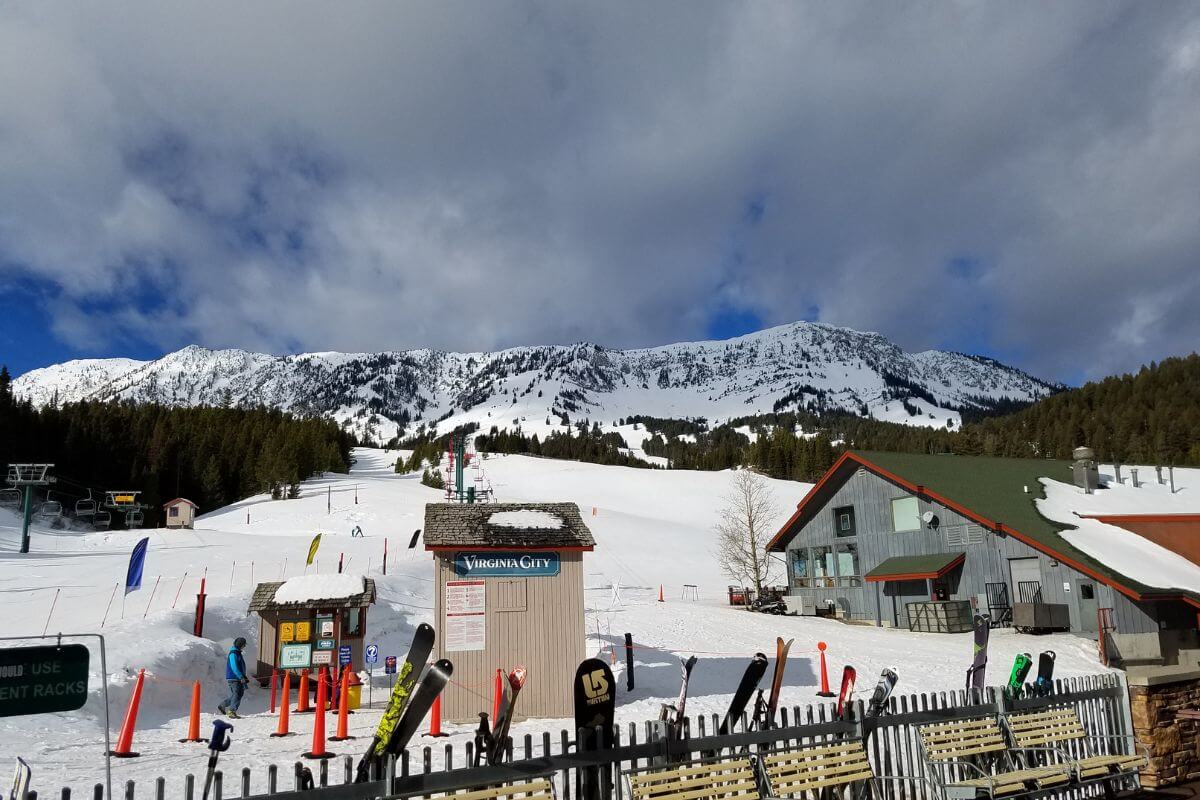
If you’re a winter sports enthusiast, Bridger Bowl Ski Area is a must-visit during your Montana adventure.
Located just a short drive from Bozeman, this ski area offers some of the most challenging and exhilarating skiing and snowboarding experiences in the state.
Here’s why you should add Bridger Bowl to your Montana itinerary:
- Skiing and Snowboarding – From deep powder to steep chutes, Bridger Bowl has it all. The ridge terrain is particularly popular, with its rock cliffs and snow fields offering a thrilling challenge. The area is known for promoting responsible skiing and snowboarding, so you can enjoy your runs with peace of mind.
- Lessons and Programs – Whether you’re a beginner or looking to up your game, Bridger Bowl has you covered. Private and group lessons are available, and they even offer adult multi-week programs for a more immersive experience. I’ve taken a few lessons myself, and the instructors are top-notch.
- Rental Services – Don’t have your gear? No problem. Bridger Bowl offers on-site rental services, so you can hit the slopes without lugging your equipment around.
- Food and Beverage – After a few runs, you’ll want to refuel. The Jim Bridger Lodge, Deer Park Chalet, and Alpine Cabin offer a range of food and beverage options, from quick bites to sit-down meals. Trust me, the hot cocoa at the Deer Park Chalet is a game-changer on those chilly days.
Bridger Bowl is more than just a ski area; it’s a community. The locals are friendly, and the atmosphere is laid-back.
Just make sure to check the weather conditions before you go, as the area can get quite a bit of snow, which only adds to the adventure.
8. Little Bighorn Battlefield National Monument
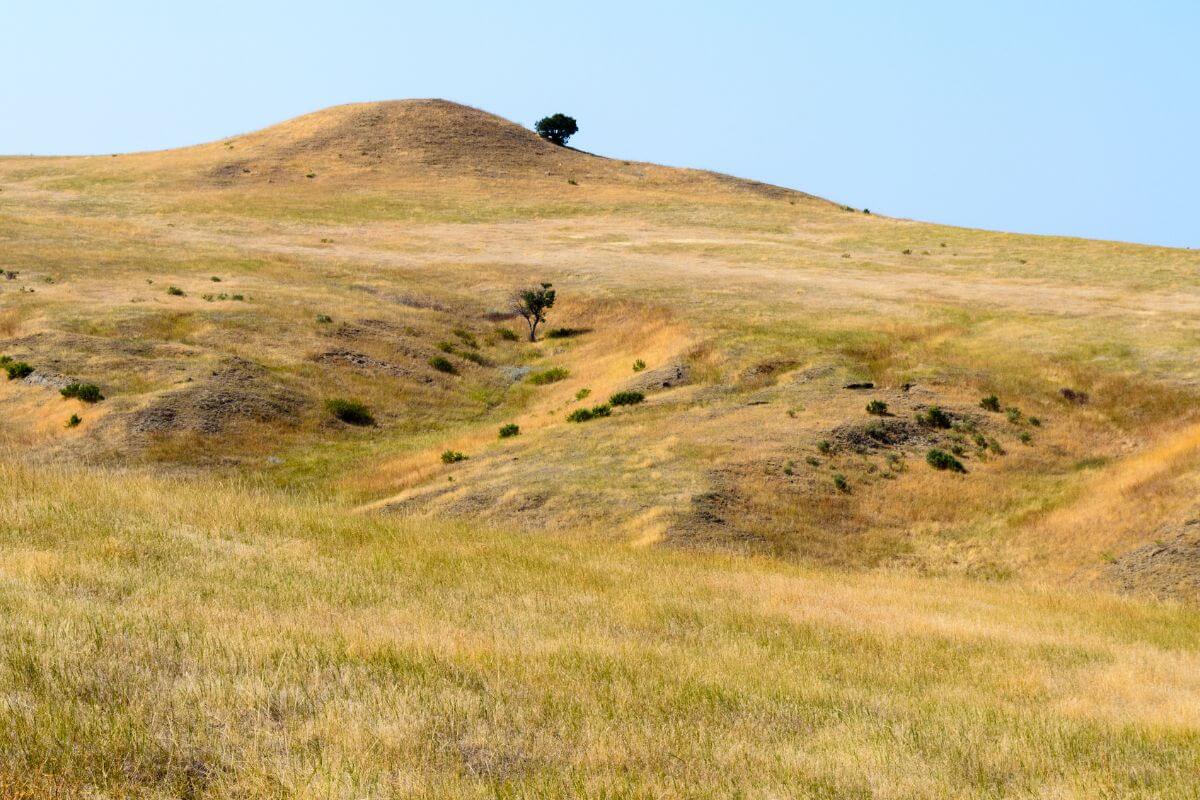
If you’re a history buff or just fascinated by the stories that shaped America’s past, Little Bighorn Battlefield National Monument is a must-visit. Located near Crow Agency, Montana, this hallowed ground preserves the site of the famous Battle of the Little Bighorn.
Visitors can drive the 4.5-mile tour road, which includes stops at important sites along the route. Whether you’re a Custer connoisseur or new to the tale, the guided or self-guided tours here offer a deep dive into the battle’s significance.
Standing on Last Stand Hill, where the gravestones of fallen troops dot the landscape, is a solemn and moving experience. Don’t miss the Indian Memorial, a testament to the Native Americans who fought in the battle.
I’ve always found this place to be a living history lesson. The museum and bookstore are packed with artifacts and accounts, and the walking tour with interpretive markers brings the battlefield to life.
The monument is open year-round, but do check the official website for current hours, as they vary by season. Just a stone’s throw away, this area offers beautiful hiking trails and sweeping views of the Bighorn River.
Whether you’re a history buff, a nature lover, or both, Little Bighorn Battlefield National Monument and its surroundings offer a rich tapestry of experiences that you won’t want to miss.
9. Missoula
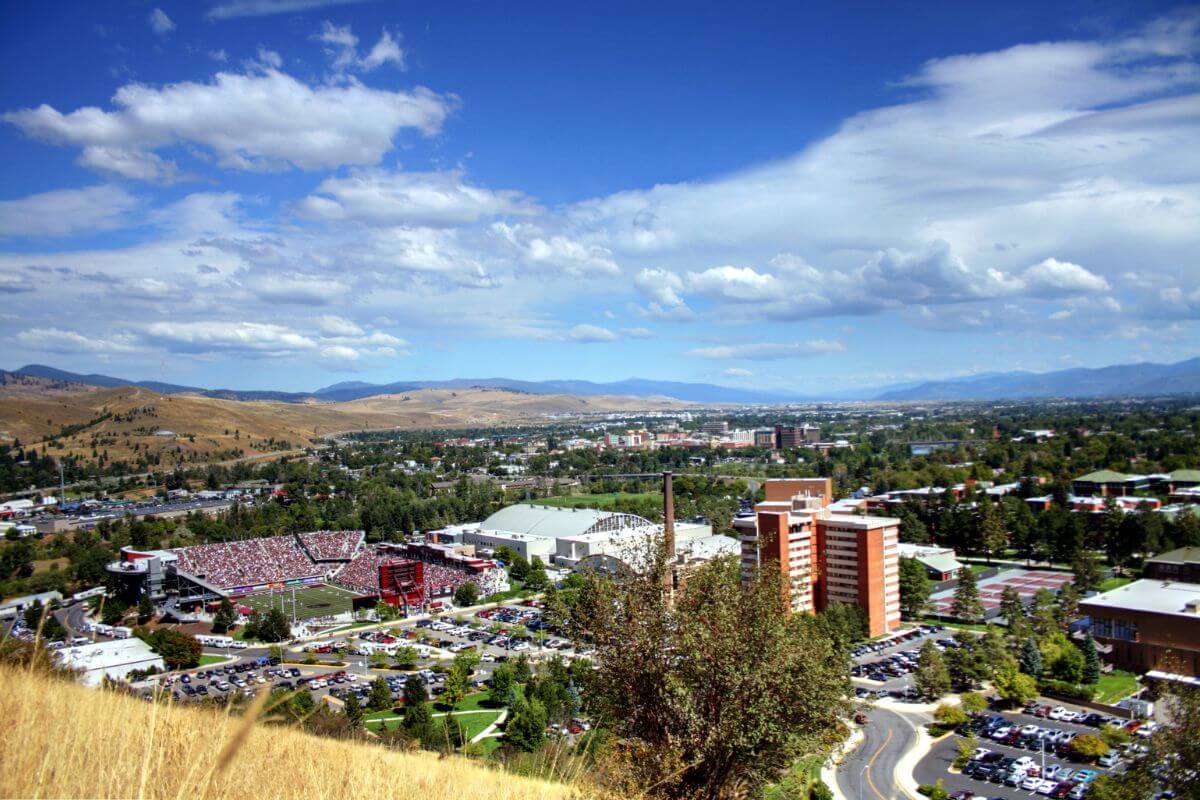
Missoula, the cultural hub of Western Montana, is a city that effortlessly marries the great outdoors with urban delights. Here’s why it deserves a spot on your Montana itinerary:
- Outdoor Adventures – From the Rattlesnake Wilderness to the Pattee Canyon Recreation Area, Missoula’s backyard is an adventurer’s playground. I once hiked the Rattlesnake trail and was rewarded with amazing views of the city and the Clark Fork River. If you’re visiting in winter, don’t miss the Snowbowl ski area for some downhill fun.
- Museums and Historic Sites – If you’re more of a history buff, the Aerial Fire Depot and Smokejumper Center is a fascinating stop. The Rocky Mountain Elk Foundation is another must-visit, offering insights into the region’s wildlife conservation efforts.
- Downtown Delights – The heart of Missoula is its vibrant downtown. I recommend starting your day at the Missoula Farmers’ Market, where you can stock up on local produce and crafts. Caras Park, right by the Clark Fork River, is a great spot for a picnic or to catch a live event.
- Cultural and Culinary Offerings – The Missoula Art Museum showcases both local and international contemporary art, while the Roxy Theater is a beloved spot for indie film screenings. When your stomach starts rumbling, the Edelweiss Cafe and Black Coffee Roasting Company are local favorites.
- Day Trips – If you have a little extra time, take a scenic drive to the Garden of One Thousand Buddhas in Arlee or explore the picturesque Bitterroot Valley. Trust me, the amazing views are worth it.
Missoula is a destination that truly has something for everyone. This city will leave you with memories as diverse as its offerings.
10. Bozeman
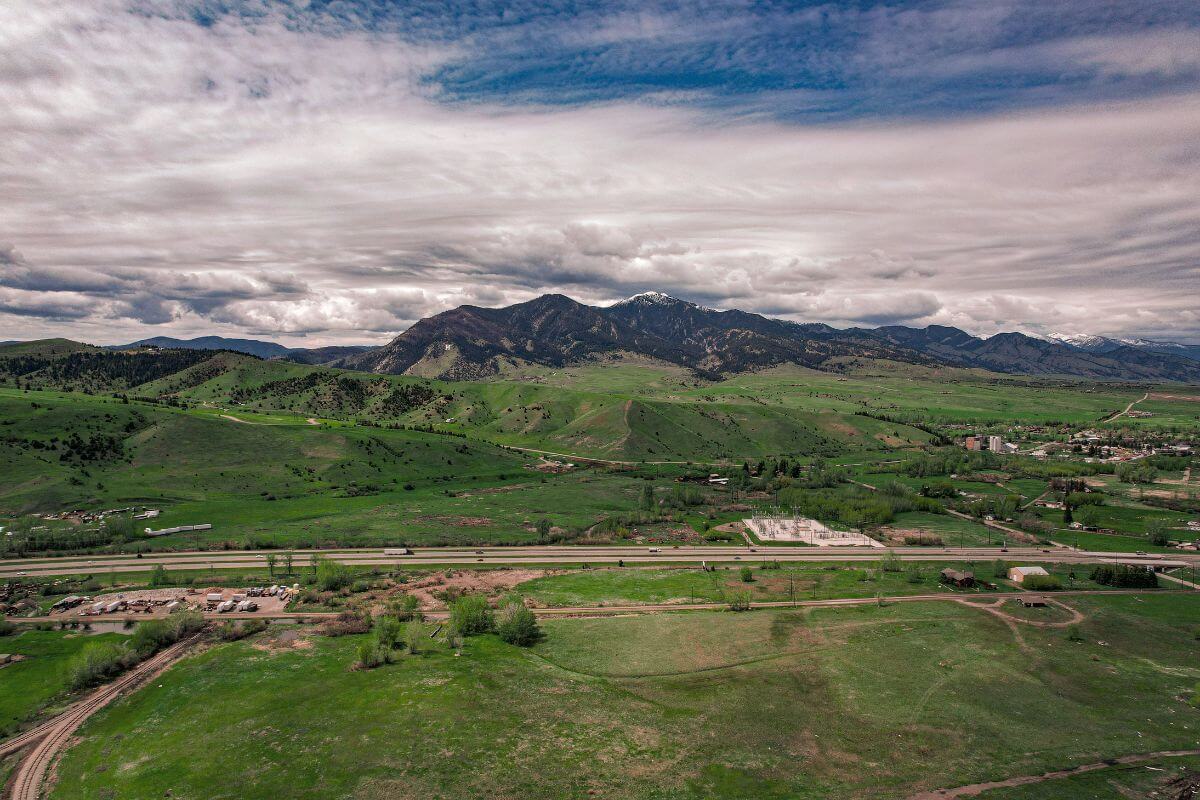
Bozeman, the heart of Montana’s Gallatin Valley, is a tapestry of rugged landscapes and vibrant city life. Whether you’re an outdoor enthusiast, a history buff, or a foodie, this city has something for you.
Some of the top things to do in Bozeman include:
- Outdoor Activities: Bozeman is known for its outdoor opportunities, such as hiking the M Trail, a 3.5-mile trail to the top of Mount Baldy, and exploring the nearby Gallatin River and Hyalite Reservoir.
- Cultural Attractions: Visitors can explore the Museum of the Rockies, which is affiliated with Montana State University and the Smithsonian, and the American Computer & Robotics Museum, showcasing the history of computing and robotics.
- Wildlife Encounters: The Montana Grizzly Encounter offers an up-close experience with grizzly bears in a safe and educational setting.
- Natural Wonders: Bozeman is home to several natural wonders, such as Palisade Falls in Hyalite and the geothermal hot springs in the nearby town of Four Corners.
- Downtown Exploration: Bozeman’s downtown area is worth exploring, with unique shops, restaurants, and local businesses like MAP, Starkys, and the Wax Museum.
If you are looking for a place to stay in Bozeman, I recommend the Kimpton Armory Hotel located in the heart of downtown Bozeman, this hotel is charming, historic, and energetic.
Bozeman is a place where you can hike in the morning and catch a live music show in the evening, this city won’t disappoint.
11. Beartooth Highway
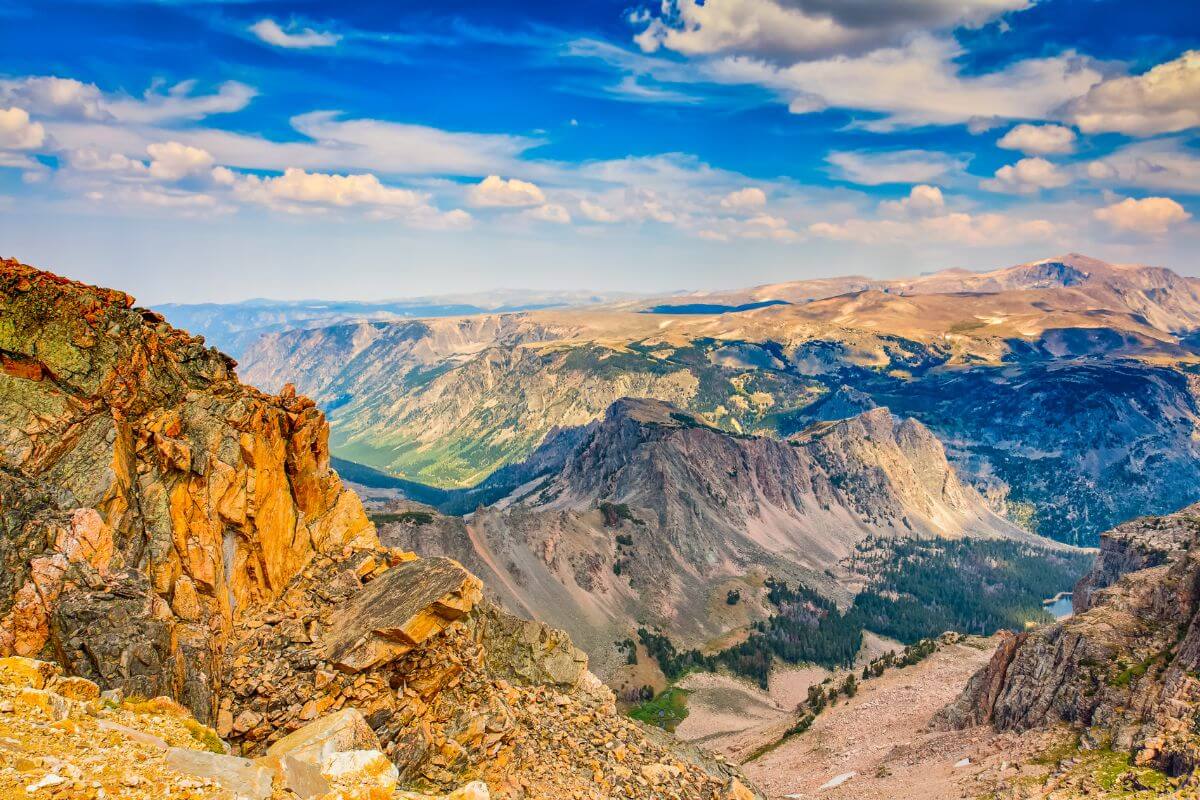
Driving the Beartooth Highway is like navigating through a postcard brought to life.
The highway is a 68-mile road that runs along the border of Montana and Wyoming and offers a spectacular and thrilling drive with breathtaking scenery.
Here are some things to do and tips for traveling the Beartooth Highway:
- Scenic Drive – The Beartooth Highway is one of the most scenic drives in the USA, offering amazing views of alpine lakes, towering peaks, and national forests. It is open from late May through mid-September, weather permitting.
- Outdoor Activities – Along the highway, visitors can enjoy activities such as hiking, fishing, kayaking, and canoeing at places like Greenough Lake Campground, which is stocked with rainbow trout and open to various recreational activities.
- Sightseeing – The drive includes the opportunity to view the tallest peaks in Montana, several national forests, and the option to add on short hikes to viewpoints and waterfalls.
- Best Way to Travel – The Beartooth Highway can be driven by car, RV, or motorcycle, and the best time to travel is from late May to mid-September when the road is open.
- Nearby Attractions – Nearby attractions include the towns of Red Lodge and Cooke City, as well as the opportunity to enter Yellowstone National Park via the Northeast Entrance.
I remember driving the Beartooth Highway on a clear summer day. The wind rushed through my hair as I marveled at the snow-capped peaks—it was a moment of pure Montana magic.
Things You Need to Know Before Visiting Montana
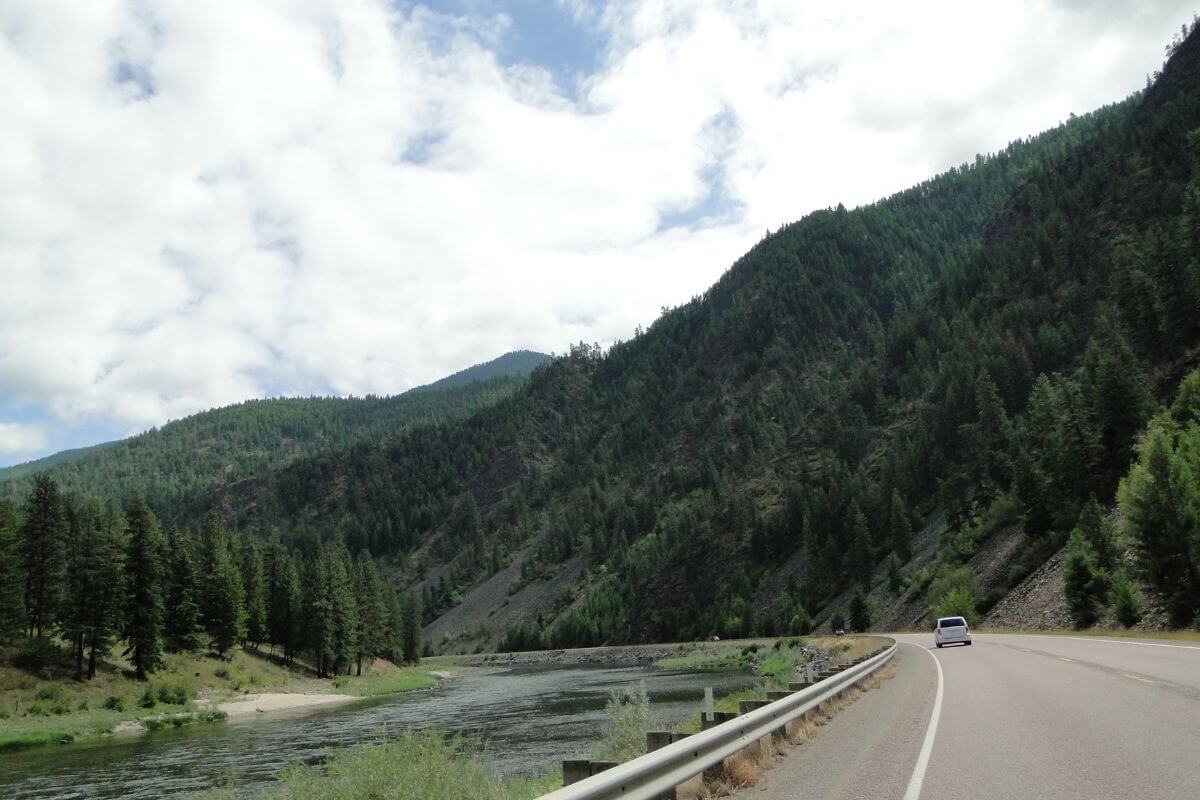
- Choose a Good Cell Service Provider – Montana’s vast and rugged landscape can result in limited cell phone coverage in some areas. It’s advisable to select a reliable cell service provider in Montana like Verizon or AT&T to ensure connectivity during your trip.
- Tap Water Drinking Safety – Montana tap water is safe to drink in most parts of the state. However, it’s recommended to confirm the water quality with local authorities, especially if you are traveling to more remote areas.
- Travel Restrictions – Depending on the time of year, weather conditions can impact travel. In the summer, be prepared for afternoon thunderstorms, and in the winter, snow can affect road conditions. It’s essential to stay informed about any Montana travel advisories.
- Book Your Rental Car Early – There has been a reported national car rental shortage of car rental companies in the state, so emphasizing the importance of booking your rental well ahead of your trip, especially when heading to sought-after destinations like national parks.
- Be Aware of a Vehicle Reservation System – As interest in national parks grows and capacity becomes limited, certain areas might implement a vehicle reservation system. It’s advisable to review any reservation requirements beforehand and plan your visit accordingly.
- Make Sure to Fill Up Your Gas Tanks – In Montana’s wide-open spaces, gas stations can be far apart. Keep your tank full, especially in remote areas.
- Always Buy Food at Your Local Grocery Store – This is a great money-saving tip that I utilize most while traveling around the state.
Montana Travel Tips Final Thoughts
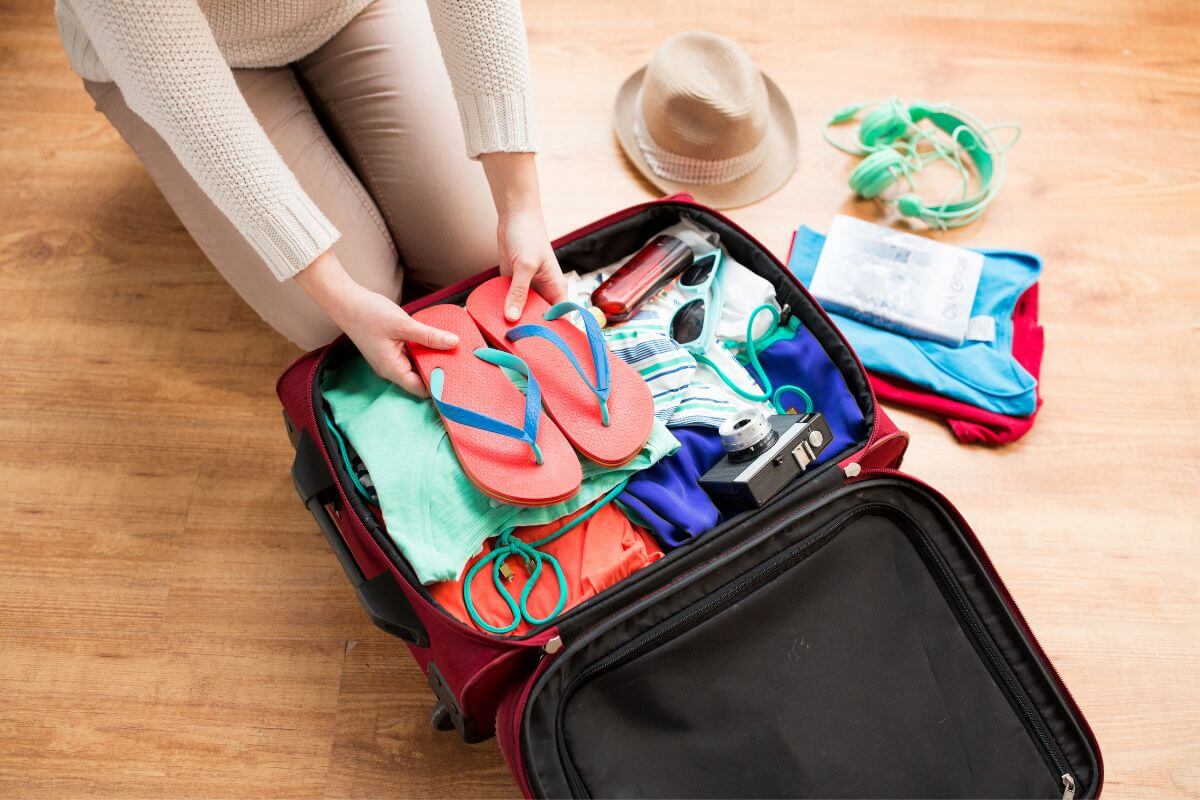
From the majestic Glacier National Park to the iconic Yellowstone and the serene beauty of Flathead Lake, there’s an abundance of breathtaking landscapes to explore.
Planning is crucial, especially during the peak months of July and August when these destinations can get quite crowded. Booking accommodations well in advance, whether inside or outside the parks, ensures a smoother and more enjoyable trip.
Safety should always be a priority, especially when venturing into nature. Carrying bear spray during hikes is a must, and staying updated on travel restrictions or any vehicle reservation systems in popular park areas is essential for a hassle-free experience.
Knowing the distances between gas stations is also essential, as they can be few and far between in certain areas. Considering the ongoing challenges with rental car shortages, booking your vehicle well in advance is highly recommended.
But amidst these logistical considerations, don’t forget to soak in the unparalleled beauty of Montana.
Pack wisely for changing weather conditions, embrace the vastness of Big Sky Country, and get ready for an unforgettable adventure!
- Read more about the Average Montana Temperatures
Montana Travel Tips FAQs
1. What Is the Best Month to Visit Montana?
Montana shines during the summer months, particularly in July and August.
These periods offer prime conditions for outdoor adventures, boasting excellent weather and a wide range of available services.
However, it’s worth noting that the popularity of this season might lead to crowds, especially in national parks.
2. What Is the Most Famous Thing in Montana?
One of the most famous and iconic attractions in Montana is Glacier National Park. Known for its stunning landscapes, diverse wildlife, and extensive hiking trails, it’s a symbol of the state’s natural beauty and outdoor adventures.
3. What Clothes Do I Wear in Montana?
Montana’s varied climate calls for adaptable clothing. In summer, lightweight, breathable fabrics are great for warm days, but layers are essential for cool mornings and evenings.
Fall and spring require layers as temperatures fluctuate. Winters demand warm, insulated clothing — think jackets, gloves, hats, and boots. It’s wise to check the forecast and pack accordingly for any Montana visit.
Dive deeper into planning a trip to Montana with these recommended articles:
- Ideas for Montana Vacations
- Transportation in Montana
- Best Months for Montana
- Why Should I Visit Montana
- Montana Maps Showing Cities
- Montana Webcam Views
- https://www.nps.gov/articles/000/plan-like-a-park-ranger-top-10-tips-for-a-winter-visit-to-yellowstone-national-park.htm
- https://www.nps.gov/glac/planyourvisit/safety.htm
- https://www.nps.gov/glac/planyourvisit/guided-hiking-trips.htm
- https://www.flickr.com/photos/jjandames/14816431867
- https://www.flickr.com/photos/191298536@N04/52198442155
- https://www.flickr.com/photos/30709234@N02/5122589082
- https://www.flickr.com/photos/jeckman/34211223972
- https://www.flickr.com/photos/nicholas_senn/5969009080
- https://www.flickr.com/photos/tskphoto/10141878546
- https://www.flickr.com/photos/kmoliver/26796279074
- https://www.flickr.com/photos/usinterior/49942081792
- https://www.flickr.com/photos/stuckincustoms/4192364102

